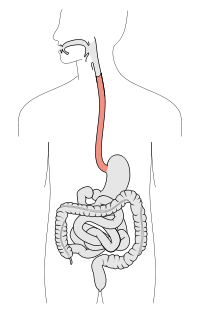
Photo from wikipedia
Purpose The call for data-driven health care has been bolstered by the digitization of medical records, quality initiatives, and payment reform. Administrative databases and clinical registries are increasingly being used… Click to show full abstract
Purpose The call for data-driven health care has been bolstered by the digitization of medical records, quality initiatives, and payment reform. Administrative databases and clinical registries are increasingly being used to study oropharyngeal dysphagia and to facilitate data-driven decision making. The objective of this work was to summarize key findings, etiologies studied, data sources used, study objectives, and quality of evidence of all original research articles that have investigated oropharyngeal dysphagia or aspiration pneumonia using administrative or clinical registry data to date. Method A literature search was completed in MEDLINE, Scopus, and Google Scholar (January 1, 1990, to February 1, 2017). Each study that met inclusion criteria was rated for quality of evidence on a 5-point scale. Results Eighty-four research articles were included in the final analysis (n = 221-1,649,871). Over the past 20 years, the number of new publications in this area has quintupled. Most of the administrative database and clinical registry studies of dysphagia have been retrospective cohort studies and cross-sectional studies and limited to quality of evidence levels of 3-4. In these studies, much has been learned about risk factors for dysphagia and pneumonia in defined populations and health care costs and usage. Little has been gleaned from these studies regarding swallowing physiology or dysphagia management. Conclusions Investigators are just beginning to develop the methods to study oropharyngeal dysphagia using administrative data and clinical registries. Future research is needed in all areas, from the fundamental issue of how to identify individuals with dysphagia with high sensitivity in these data sets to evaluating treatment effectiveness. Supplemental Material https://doi.org/10.23641/asha.6066515.
Journal Title: American journal of speech-language pathology
Year Published: 2018
Link to full text (if available)
Share on Social Media: Sign Up to like & get
recommendations!